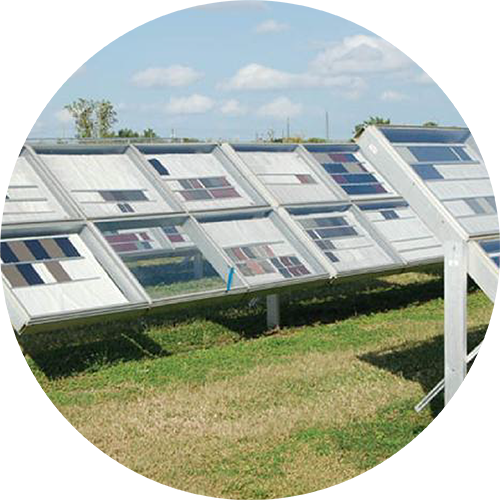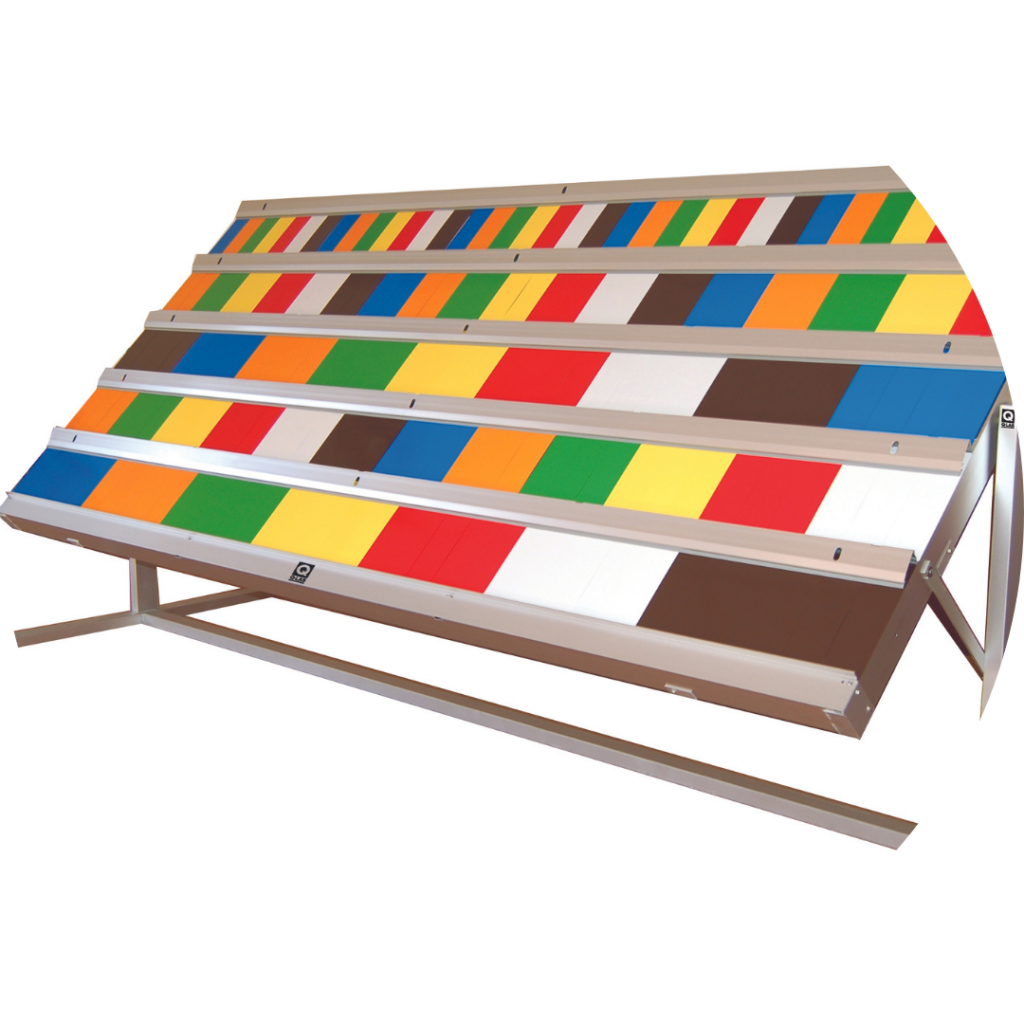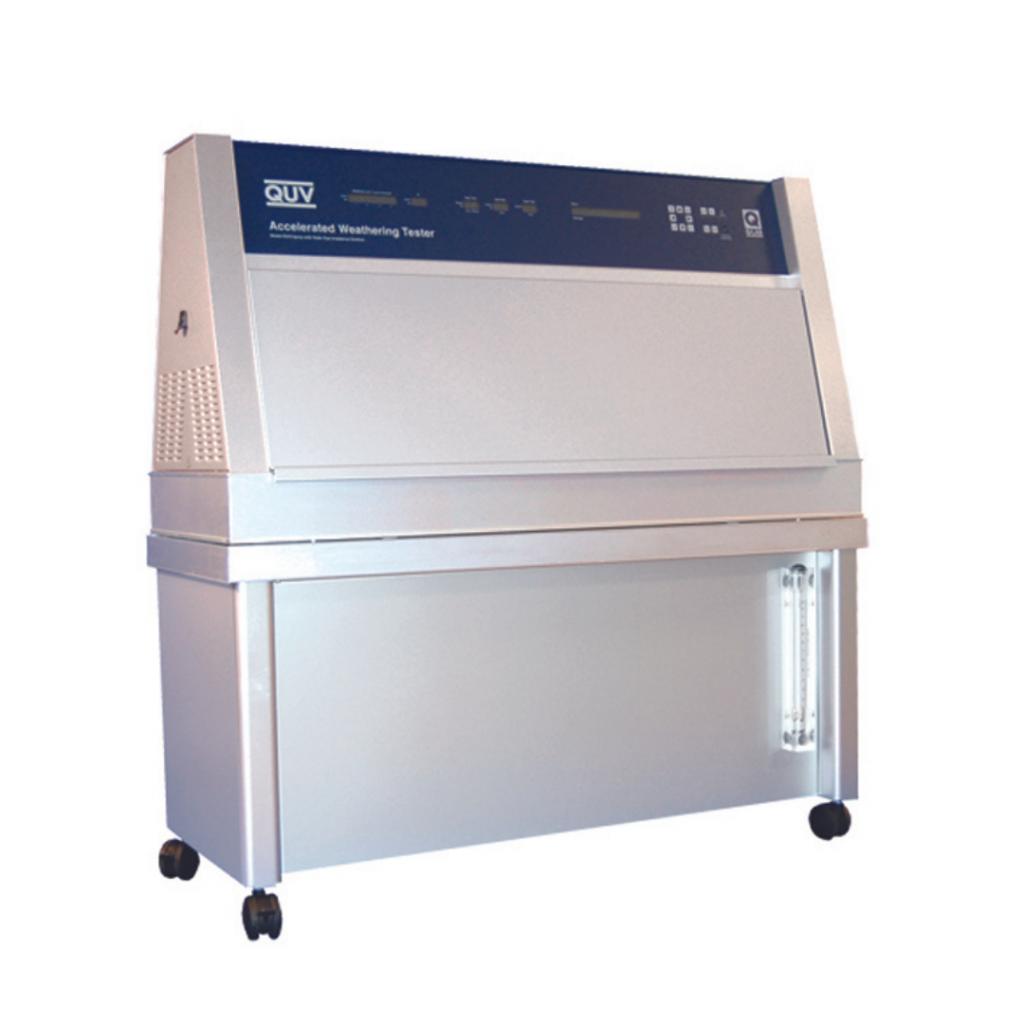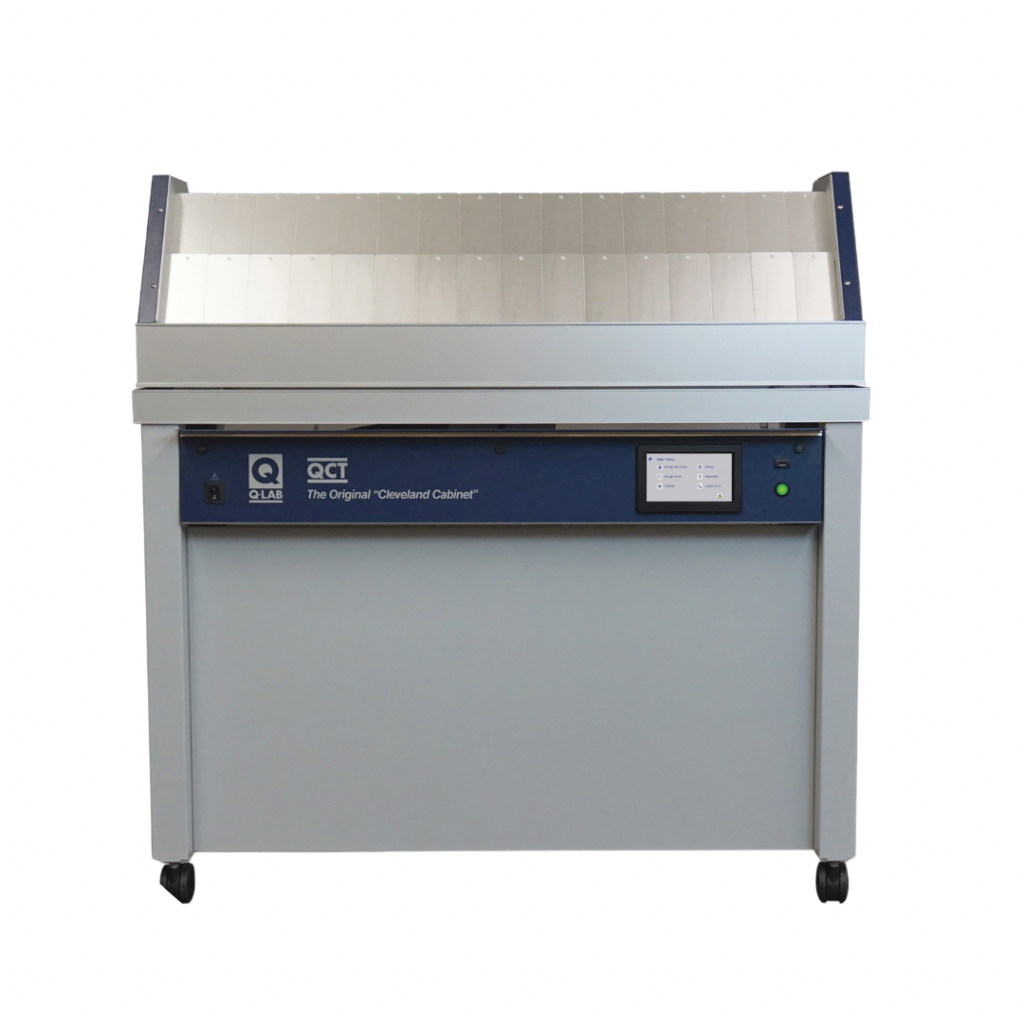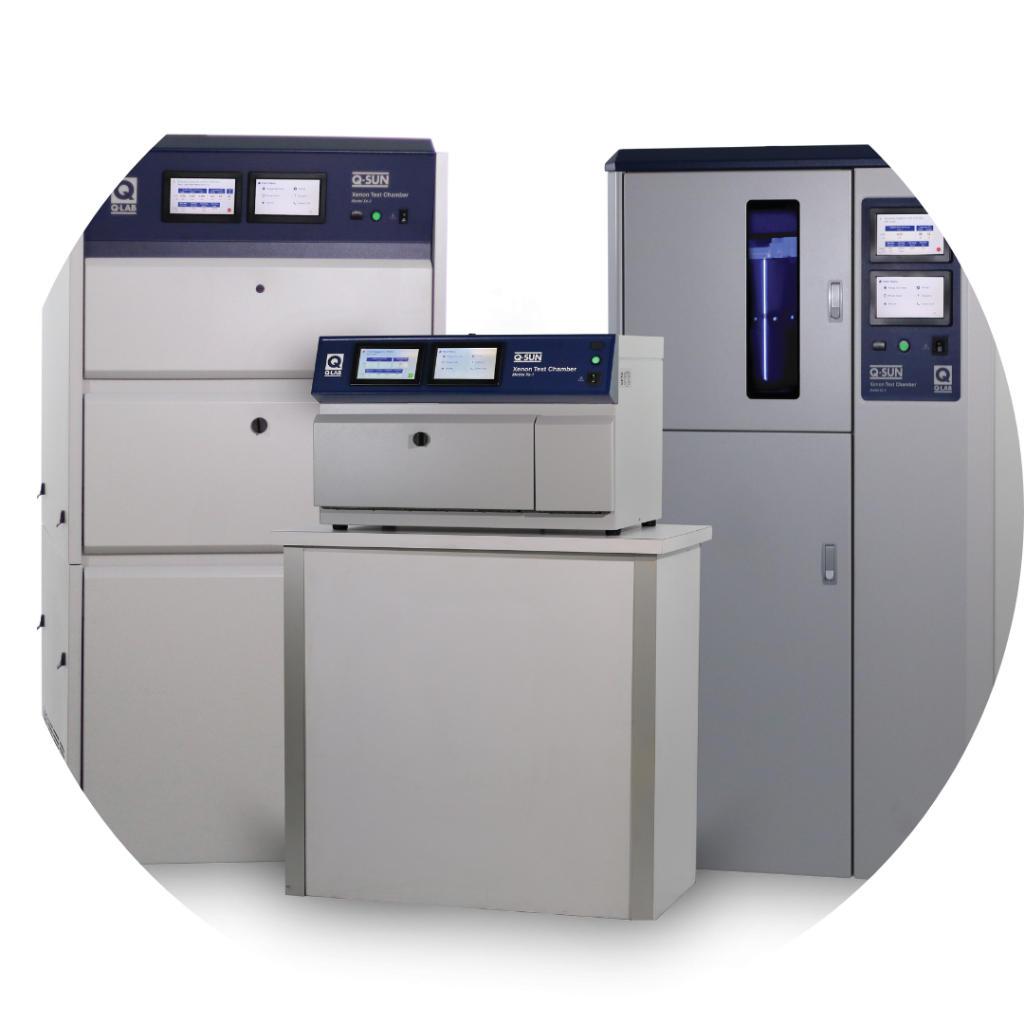WEATHERING
TEST
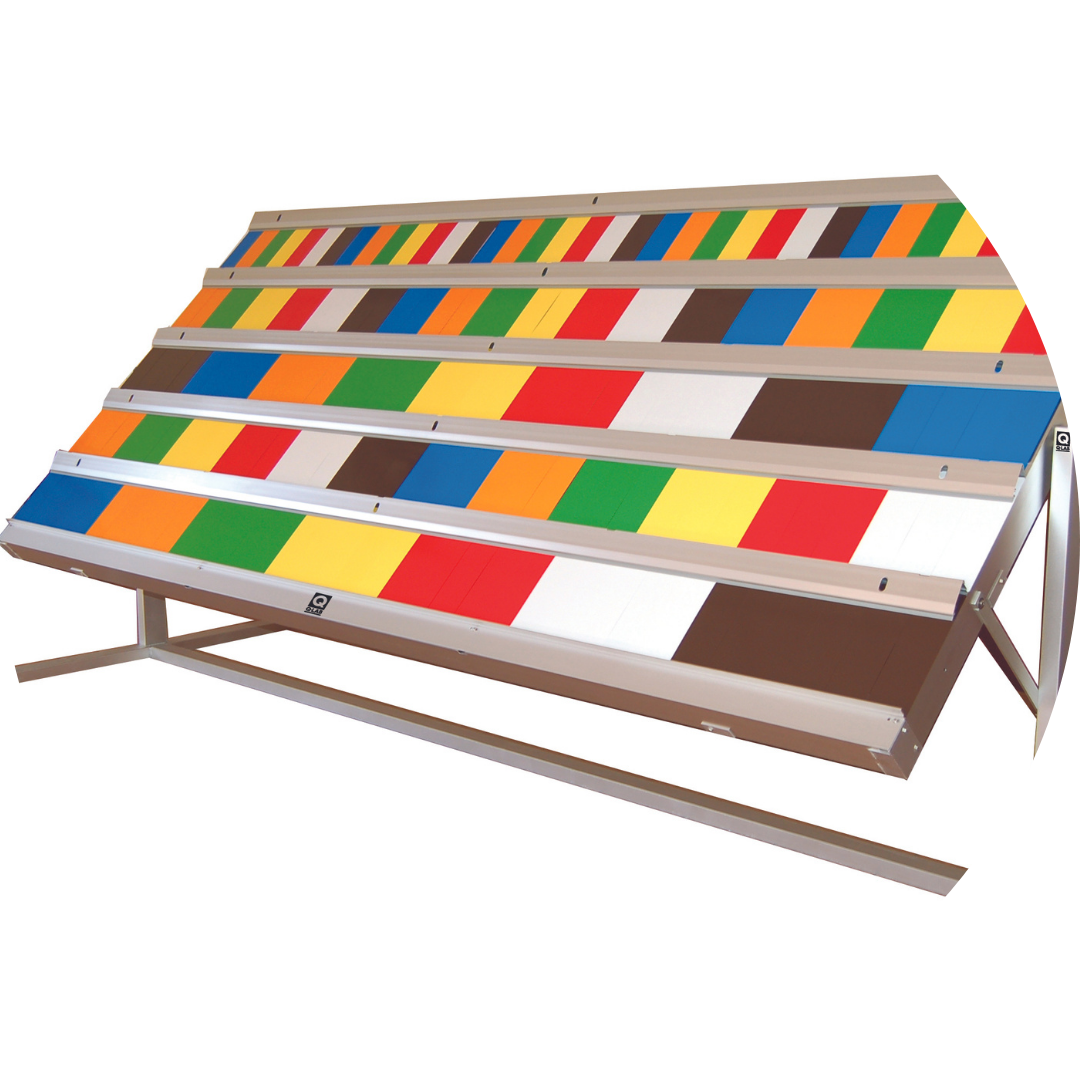
Q-RACK
Q-RACK is a brand of aluminum racks used in Q-Lab Florida and Q-Lab Arizona for natural weathering exposure tests. Now, these racks are available for purchase and use in your own exposures.
The robust design of Q-RACK has been tested for decades in extreme subtropical and desert conditions and is offered in kit form for assembly. The racks are versatile and reliable, complying with international outdoor testing standards ISO, ASTM, SAE, and others. Different accessories and mounting systems are also offered for various testing applications and requirements, and the Q-RACK frame can be positioned at 0°, 5°, 45°, or 90°.
DIRECT EXPOSURE RACK KITS (QRACK)
Direct exposure racks Q-RACK feature two legs and a main frame of anodized aluminum measuring 3.66 x 1.68 x 0.10 m. Both welded and knock-down frames are available, depending on the shipping location. The base and covers secure the panels and can adapt to various sample sizes. The Q-RACK direct display racks (have a base and five covers to hold the panels), additional sets can also be ordered for a greater number of samples. Sturdy positioning arms are used to keep the frames secure at the correct exposure angle (see Accessories). Sold in pairs, the Q-RACK system can be positioned at 0° (horizontal), 5°, 45°, or 90° to meet your testing specifications.
Other accessories include sub-frames (set of 8), additional racks, test panels, and a black box modification kit.
GLASS WINDOW EXPOSURE RACK KITS (QRACK)
Glass window exposure racks Q-RACK feature two legs and a special main frame of anodized aluminum measuring 3.66 x 1.68 x 0.10 m. Six sub-frames are provided, each covered by a special 3 mm window glass. All mounting accessories are supplied to secure the samples. Sturdy positioning arms are used to keep the frames secure at the correct exposure angle (see Accessories). Sold in pairs, the Q-RACK system can be positioned at 0° (horizontal), 5°, 45°, or 90° to meet your testing specifications.
A glass window exposure black box modification kit is also available. With the aluminum black box, the rack is useful for testing indoor materials at high temperatures.
QUV
The QUV accelerated weathering equipment reproduces the damage caused by sunlight, rain, and dew. In just a few days or weeks, the QUV can replicate damage that occurs over months or years outdoors.
To simulate weathering, the QUV exposes materials to alternating cycles of UV light, controlled condensa-tion, and high temperatures.
It simulates the effects of natural sunlight and artificial irradiance using special UV fluorescent lamps in the UVA, UVB, and UVC portions of the spectrum.
It simulates dew and rain with condensed humidity
and/or water spray.
Thousands of QUV units are in operation
worldwide, making it the most widely used
weathering equipment globally.
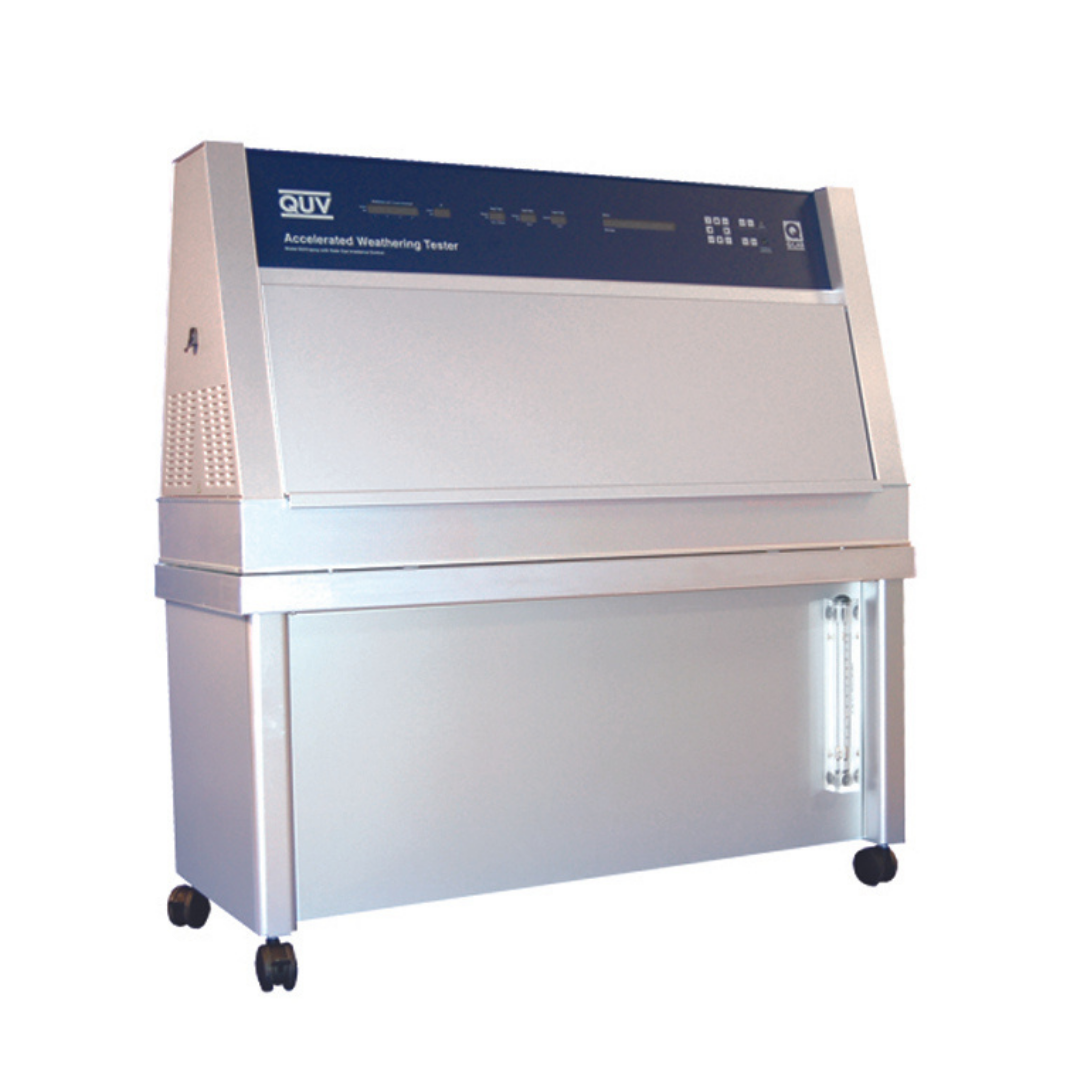
QUV/BASIC MODEL
This is the simplest version of the QUV chamber. It uses UV fluorescent lamps and a condensation system to simulate humidity. This model does not include the SOLAR EYE irradiance control. Consequently, the light intensity cannot be adjusted or calibrated. This means the QUV/basic chamber cannot be used for high irradiance tests. Additionally, it requires periodic lamp replacement and repositioning. Q-Lab re-commends the QUV/basic chamber for comparative exposures where test samples and control samples are exposed simultaneously in the same chamber.
QUV/SE MODEL
The most popular QUV model, QUV/SE features the SOLAR EYE irradiance control, allowing precise maintenance of UV light intensity. The QUV/SE chamber uses a proven condensation mechanism to simu-late outdoor moisture attack. The SOLAR EYE system is a precision control system that automatically maintains light intensity through a feedback loop. The controller monitors UV light intensity and compen-sates for lamp aging and variability by adjusting their power supply.
QUV/SPRAY MODEL
The QUV/spray chamber has the same functions as the standard QUV/SE but also includes a water spray system. Short spray periods can be used to create thermal shock, and longer periods can achieve me-chanical erosion. The QUV/spray chamber can be set to produce only UV light, only spraying, or conden-sation. The QUV/spray chamber can be set to produce: ultraviolet (UV) light only, spray only, or condensation. The use of deionized water is recommended for all spraying applications.
QUV/UVC MODEL
UVC light is widely used in ultraviolet germicidal irradiation (UVGI), a technique used to kill viruses and bacteria. This short-wavelength, high-energy UVC light can also degrade materials and surfa-ces it disinfects. The QUV/uvc model uses UVC lamps to deliver concentrated light at 254 nm to check material durability against the photodegradation effects resulting from UVC light exposure. The QUV/uvc equipment has multiple safety features to prevent stray UVC light from escaping and is not equipped with condensation or water spray.
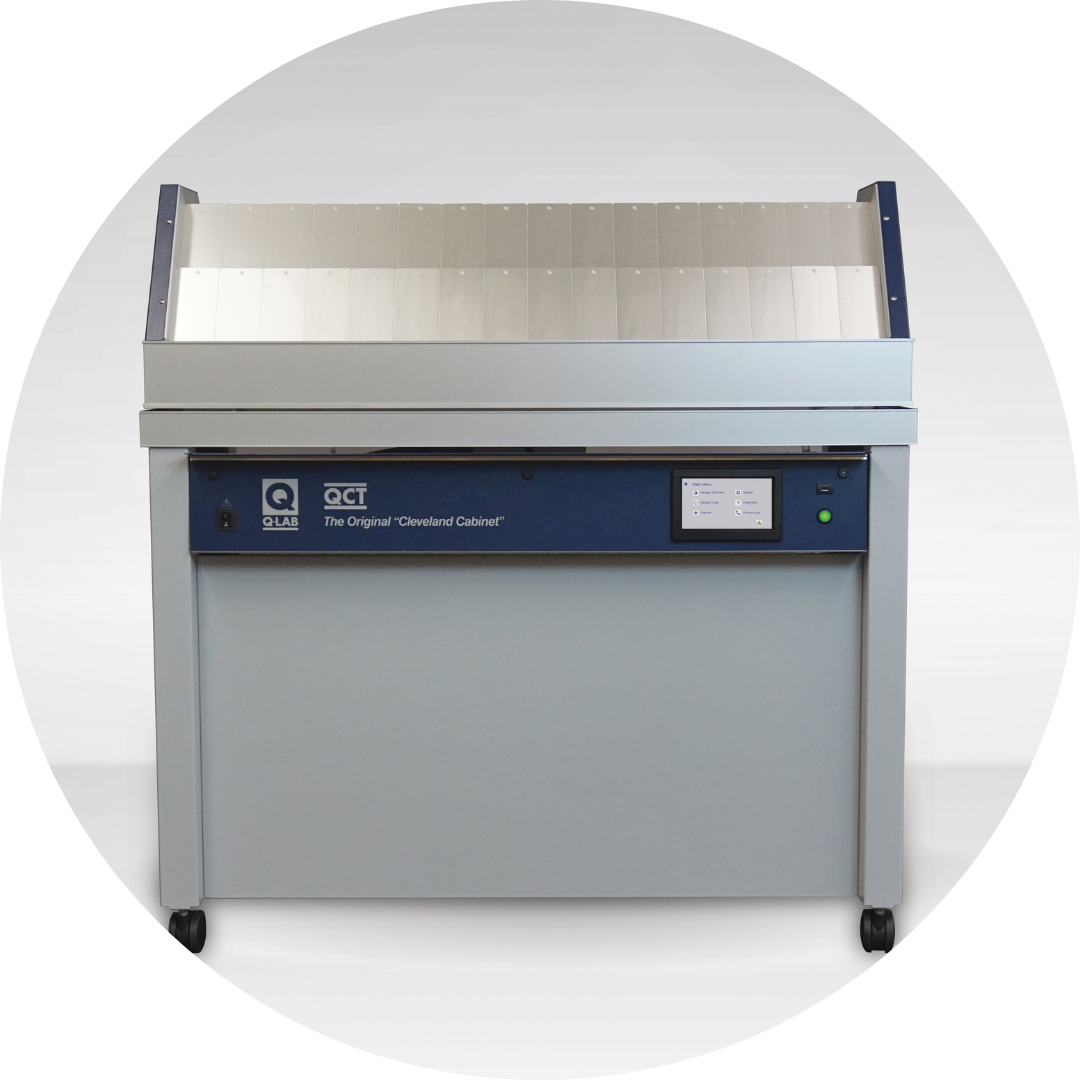
QCT
The QCT condensation chamber simulates the damaging effects of outdoor moisture attack by directly condensing water onto samples. In just a few days or weeks, the QCT chamber can reproduce damage due to moisture that would occur over months or even years outdoors.
The QCT chamber features an automatic drying system, which operates by circulating hot air in the test chamber.
A combination of wet and dry periods can be programmed using a 24-hour repetitive timer, dividing the day into 96 increments of 15 minutes.
The water consumption of the QCT chamber is approximately 2 liters of tap water per day. It has an au-tomatic water supply that connects to a source through a 6 mm plastic tube.
Its construction is corrosion-resistant anodized aluminum, with a glass-coated water tray and a magnesi-um anode for cathodic protection.
Q-SUN
Q-Sun xenon arc lamps reproduce the damage caused by full-spectrum sunlight and rain.
In just a few days or weeks, the Q-Sun chamber can replicate damage that occurs over months or even years outdoors.
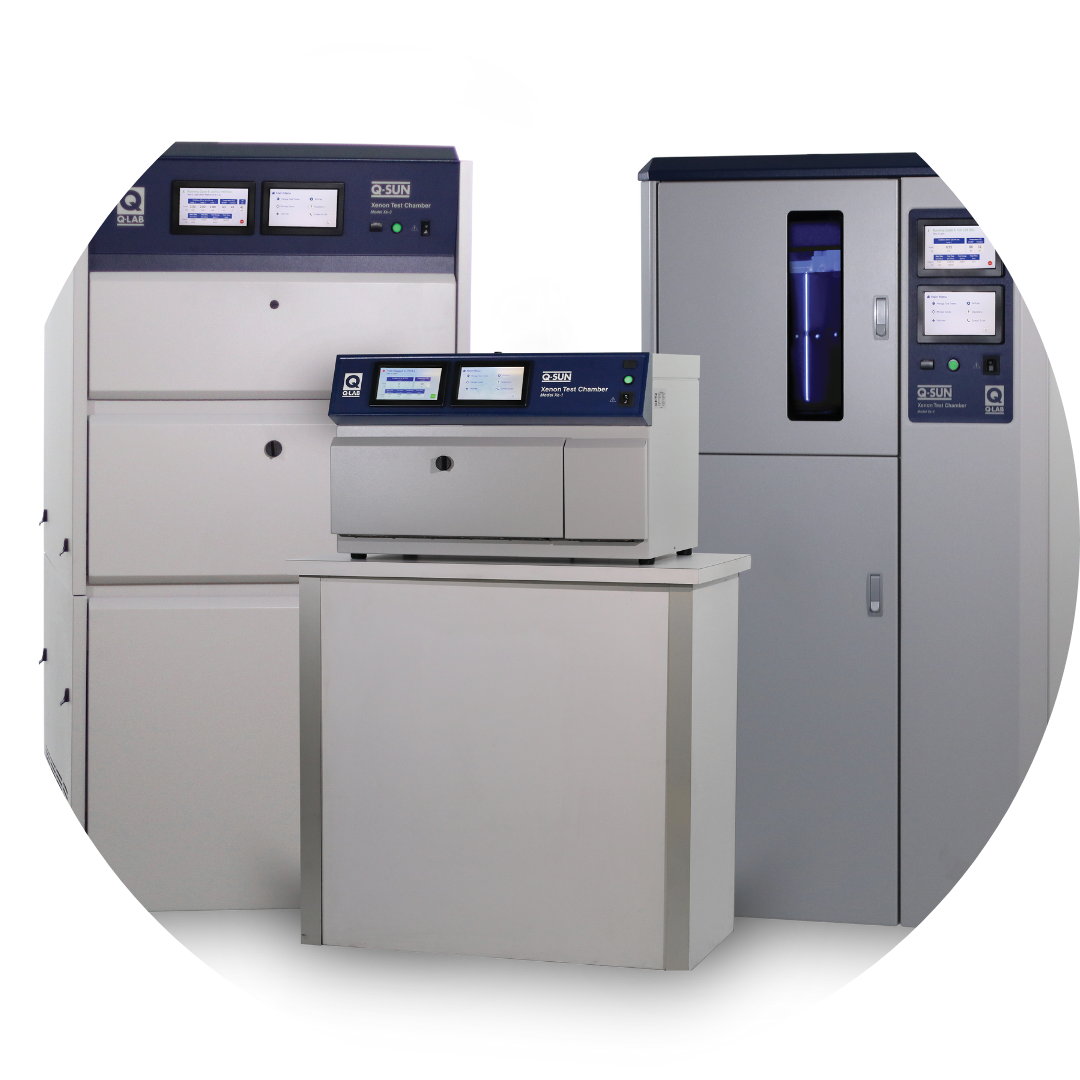
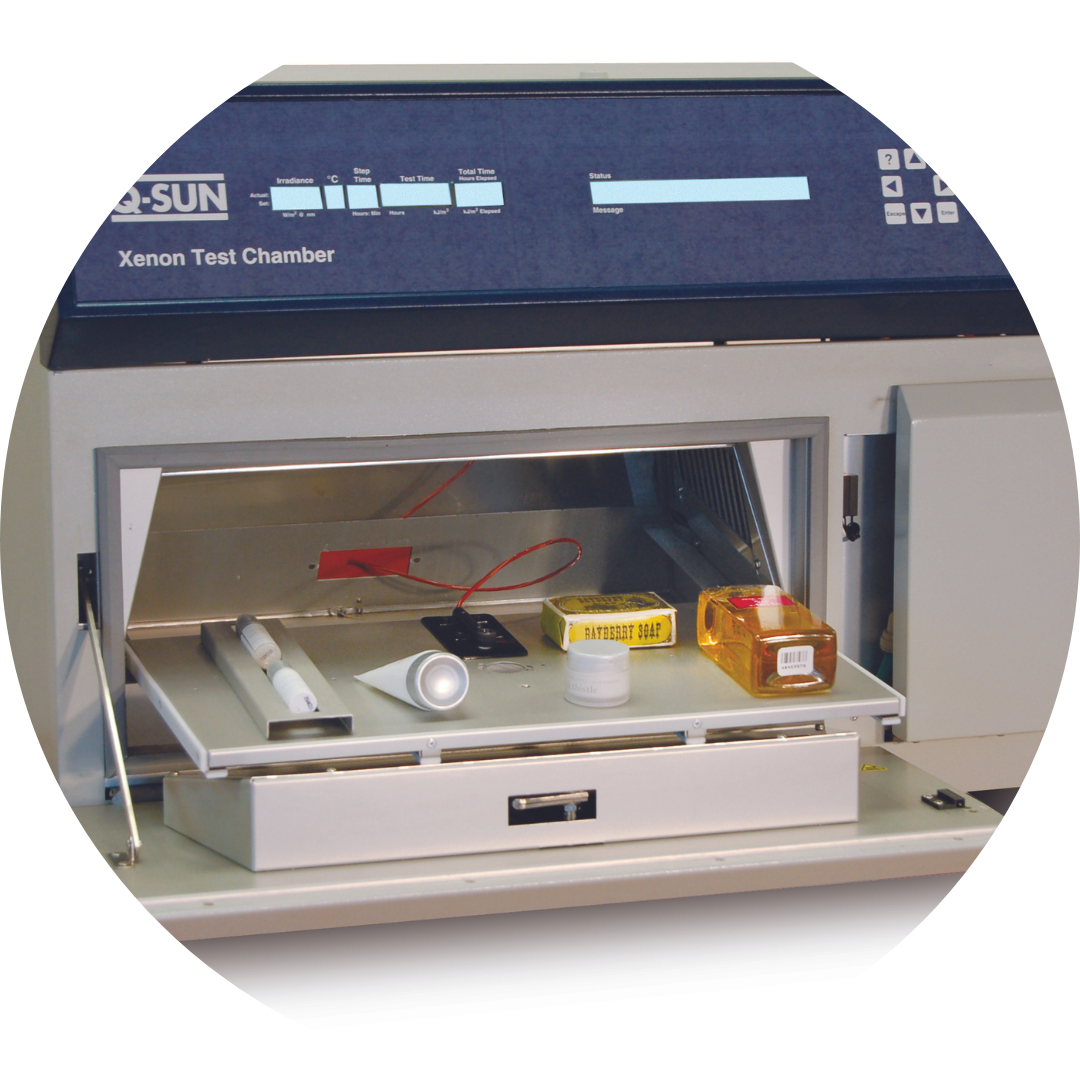
Q-SUN XE-1 MODEL
The Q-Sun Xe-1 is a tabletop chamber for testing photostability, color stability, and sunlight stability.
It features a single xenon arc lamp and is offered with optional water spray and cooler.
Installation of the Xe-1 chamber is simple, and samples can be conveniently mounted horizontally on its flat sample tray.
FULL SPECTRUM XENON LAMPS
Xenon arc lamps offer the best reproduction of full-spectrum natural sunlight. Q-Lab’s lamps are air-cooled (not water-cooled), making them more economical, highly efficient, and very low maintenance. Standard lamps last 1500 hours, and the Xe-1 uses one lamp per machine. Enhanced lamps last 3000 hours under normal irradiance and 1000 hours under high irradiance.
MONITORING AND TEMPERATURE CONTROL
Temperature control is crucial because it influences the degradation rate. In the Q-SUN Xe-3, the expo-sure temperature of the samples is precisely controlled using a black panel temperature sensor. The temperature can be adjusted anywhere between 42ºC and 120ºC, depending on whether the sensor is isolated or not, the irradiation level, filter type, lamp age, and ambient room temperature. With an optio-nal cooler, both black panel and chamber air temperatures can be controlled simultaneously, providing maximum control over sample temperature.
OPTICAL FILTERS
A selection of optical filters is offered to simulate a wide variety of service environments, such as direct sunlight and sunlight through window glass. The performance of Q-Lab filters does not decline with age; therefore, filters do not need to be replaced under normal operating conditions. The only exception to this is the Window-IR filter, which should be replaced periodically. All Q-SUN Xe-3 models use three opti-cal filters per machine. Please consult us for other possibilities of optical filters.
Q-SUN Xe-2
The Q-SUN Xe-2, thanks to the rotating display system with xenon arc lamp, allows you to simulate the damage caused by sunlight and rain.
Provides precise control of the most critical parameters such as; the spectrum, irradiance, relative humidity, chamber temperature and black panel temperature. The water spray version is also available.
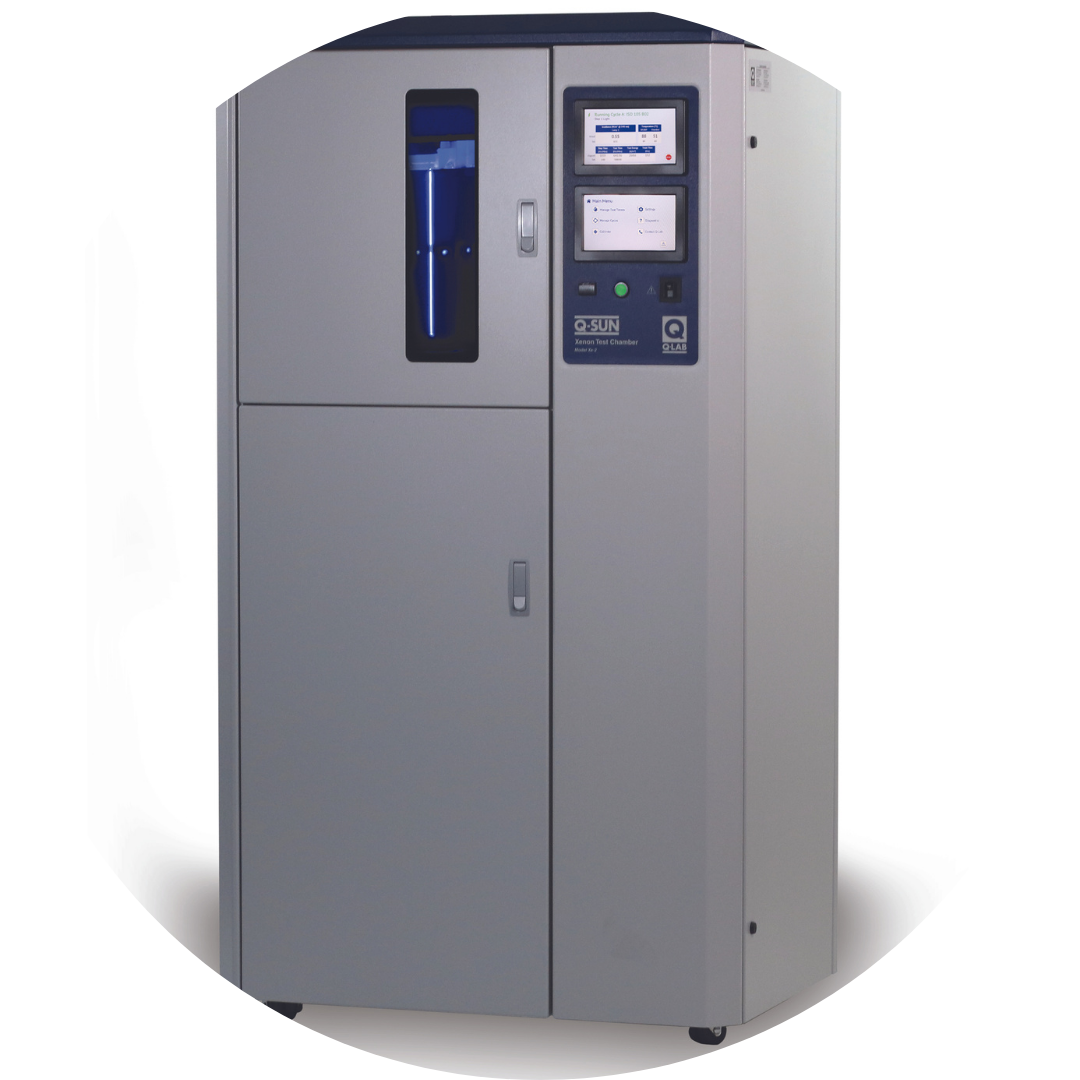
FULL SPECTRUM XENON LAMPS
Xenon arc lamps offer the best reproduction of full-spectrum natural sunlight. Q-Lab’s lamps are air-cooled (not water-cooled), making them more economical, highly efficient, and very low maintenance. Standard lamps last 1500 hours and the Xe-2 uses one lamp per machine. Enhanced lamps last 3000 hours under normal irradiance and 1000 hours under high irradiance.
OPTICAL FILTERS
The optical filters for Q-SUN Xe-2 are designed to reproduce the spectrum specified in the aging and photostability standards. A large number of industries with outdoor or indoor applications in which the incidence of light through the window has special relevance take these standards as a basis. The optical tube is composed of an outer cylinder of borosilicate or quartz glass and two sets of 7 inner filters, arranged in a two-tier heptagon shape.
TEMPERATURE MONITORING AND CONTROL
It is important to control the temperature since it can influence the speed of degradation. The temperature at the sample exposure is controlled very precisely thanks to the Q-SUN Xe-2 and through the use of a black panel and air temperature sensors. The temperature of the black panel can be adjusted to any point between 35ºC and 105ºC, depending on whether the panel is insulated or non-insulated, the level of irradiation, the type of filter, age of the lamp, air temperature of the chamber and chamber ambient temperature.
LARGE SAMPLE CAPACITY
The equipment Q-SUN Xe-2 has a large capacity for holding samples, allowing it to accommodate 31 samples of 46mm x 122mm. They are mounted vertically on the sample holder and both placement and removal are very easy to carry out.
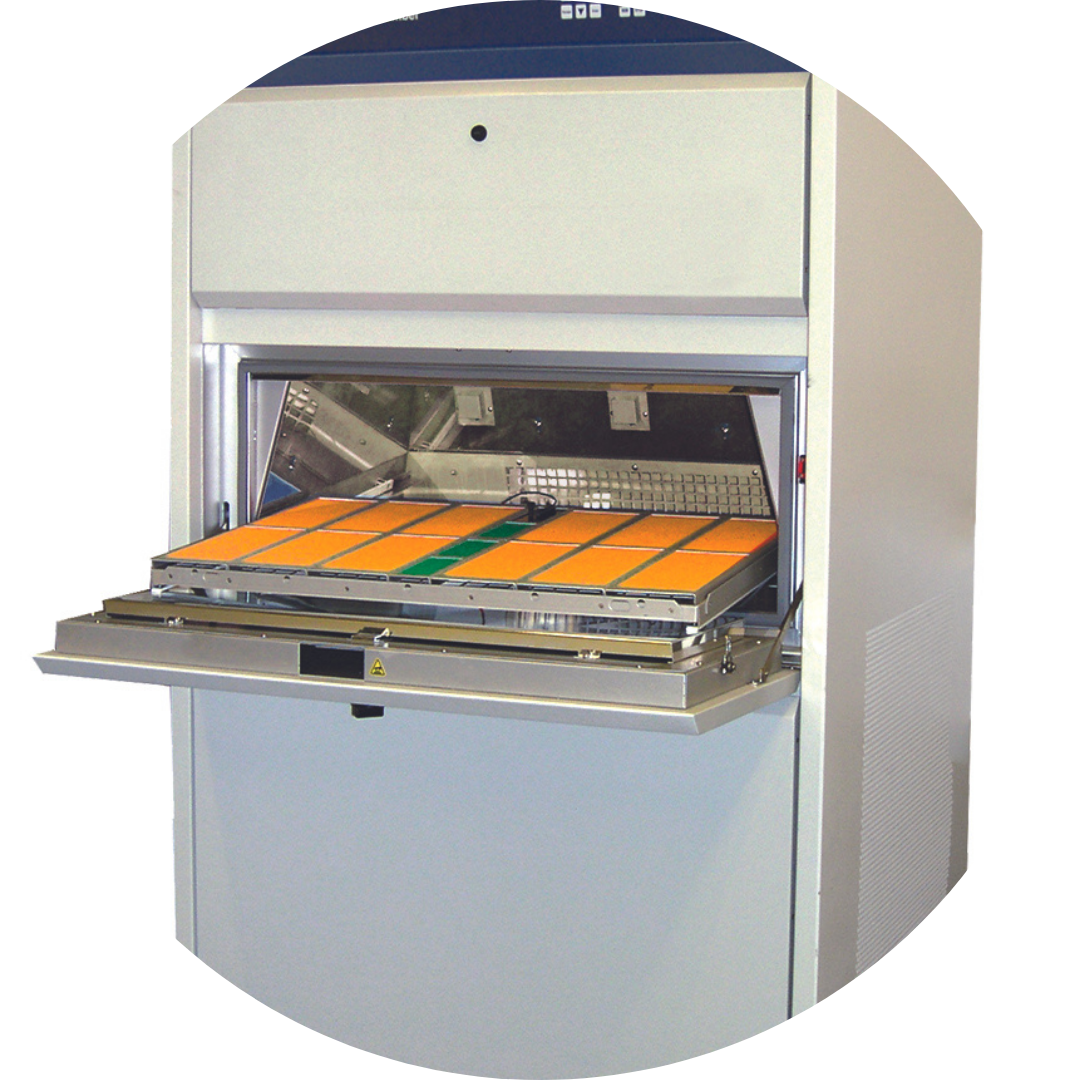
Q-SUN Xe-3
The Q-SUN Xe-3 is a photoresist, color stability and photostability testing chamber with full functionality.
It uses three separate xenon arc lamps to achieve large capacity.
The sliding sample tray on the Q-Sun Xe-3 it measures 451 mm x 718 mm, and is useful for displaying large three-dimensional parts or components. The Xe-3 chamber offers humidity control as standard, and optional spray, post-spray and chiller functions. It is the only xenon arc light camera that also has optional dual spray capability. This allows a second liquid, such as acid rain or soap solutions, to be sprayed on the samples.
FULL SPECTRUM XENON LAMPS
Xenon arc lamps offer the best reproduction of full-spectrum natural sunlight. Q-Lab’s lamps are air-cooled (not water-cooled), making them more economical, highly efficient, and very low maintenance. Standard lamps last 1500 hours and the Xe-3 uses one lamp per machine. Enhanced lamps last 3000 hours under normal irradiance and 1000 hours under high irradiance.
OPTICAL FILTERS
A selection of optical filters is offered to simulate a wide variety of service environments, such as direct sunlight and sunlight through window glass. The performance of Q-Lab filters does not decline with age; Therefore, the filters do not need to be replaced under normal operating conditions. The only exception to this is the Window-IR filter, which should be replaced periodically. All Q-SUN Xe-3 models use three optical filters per machine. Ask us about other optical filter possibilities.
MONITORING AND TEMPERATURE CONTROL
Temperature control is crucial because it influences the degradation rate. Sample exposure temperature is precisely controlled on the Q-SUN Xe-3 using a black panel temperature sensor. The temperature can be adjusted anywhere between 42ºC and 120ºC, depending on: whether the sensor is isolated or non-insulated, irradiation level, filter type, age of the lamp and ambient room temperature. With an optional chiller, black panel and chamber air temperatures can be controlled simultaneously, providing maximum sample temperature control.
VERSATILE SAMPLE MOUNTING
The flat sample mounting tray of the Xe-3 allows for the acceptance of samples of different shapes and sizes, including three-dimensional pieces. A wide variety of sample holders is available. The Xe-1 mounting tray measures 451 mm x 718 mm and holds 55 samples.
TU340 CLIMATIC CHAMBERS
The TU340 temperature and humidity chamber is used to test the performance of materials in various environments, including heat and cold, both in dry and humid conditions.
It is suitable for textile products, electronics, household appliances, mobile phones, communications, instruments, vehicles, plastic products, metal, food, chemicals, building materials, medical, aerospace and others.
